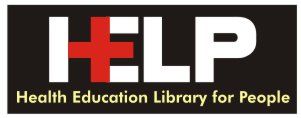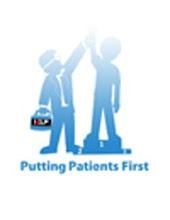 All does not seem to be well with the Indian healthcare system. To put it succinctly, it has become sick. Today, doctors assume the role of illness specialists, and not healthcare experts. India appears to be crumbling under the increasing demands that the burgeoning population is putting on the healthcare infrastructure. But is there a way out? Is there a plausible solution to this very real crisis? Yes, there is one, and it’s got a name – Information Therapy. The right information at the right time for the right person can be a powerful medicine!
All does not seem to be well with the Indian healthcare system. To put it succinctly, it has become sick. Today, doctors assume the role of illness specialists, and not healthcare experts. India appears to be crumbling under the increasing demands that the burgeoning population is putting on the healthcare infrastructure. But is there a way out? Is there a plausible solution to this very real crisis? Yes, there is one, and it’s got a name – Information Therapy. The right information at the right time for the right person can be a powerful medicine!
However, this concept is still in its infancy in India. When people talk about the problems facing Indian healthcare, the primary focus is on the shortage of doctors, and how we need to invest more money in training new ones. While opening medical colleges is rather profitable for politicians (which is why they do this all the time), this does not address the underlying issue. More doctors just create more demand for medical services, and much of this medical care is unproven, unnecessary and expensive! Too many doctors often leads to overtesting and overtreatment – and not always to better medical care !
Our initiative, Health Education Library for People (HELP), has adopted an innovative approach. Conceived over ten years ago, it’s India’s first patient education library. Our website, www.healthlibrary.com, focuses on empowering patients with information. As time progressed though, we realized that this was not sufficient. The entire ecosystem needs an overhaul to fix the underlying issues that plague healthcare in India.
What is the point in educating patients if their doctors themselves do not have access to reliable information? In India, the tragedy is that doctors rarely bother to be abreast of the latest advancements in healthcare. A majority are content with depending on their friendly medical representative and attending conferences sporadically. With the phenomenally rapid advances that occur in medicine on a regular basis, their knowledge base is shockingly confined to outdated medical textbooks. Precious few invest in buying new editions of these textbooks or subscribing to medical journals. This is why our next step , in partnership with Elsevier, the world’s largest medical publisher , was to provide the MDConsult database – the world’s largest online medical library, with over 100 full-text medical books and journals, to Indian doctors, at half the price that US doctors pay.
Then, another aspect of the problem dawned upon us. While many Indian patients spend hours online scurrying for information, much of the content provided by Indian hospitals is devoid of any real, definite value to the patient. An example of this is evident in the contrast between the Apollo Hospital and Mayo Clinic websites! Our next initiative has been to tie up with Healthwise, USA, the market leader in providing online patient educational content, so that Indian hospitals now have access to affordable and reliable content for their websites.
We have also realized that there is a major shortage of graphic content designed for Indian patients. This is why we have invested in PEAS (www.peasonline.com), the market leader in making patient-friendly content for patients in India. We feel this market is now set to boom, as more and more patients demand reliable, easy to understand educational materials from their doctors and hospitals.
While there are millions of Indian patients online, where are all the doctors? To address this, we have invested in Plus91 (www.plus91.in) to help encourage doctors to publish their own websites. We have made this process easy and inexpensive, so that every Indian doctor can establish his or her own digital clinic. We hope this will help set up a positive cycle.
The road ahead is still a long one, but one that’s filled with promise. And our ultimate goal, a superlative Indian healthcare system, makes the journey all the more worthwhile. This book is one step in that direction. Our next action steps are to invest in companies which provide e-learning courses for patient education, mobile smartphone apps for educating patients, and companies which will create content in Indian regional languages – a completely untapped, but huge market!
These are exciting times, and we are happy to be playing such an active role in this transformation!



No comments:
Post a Comment